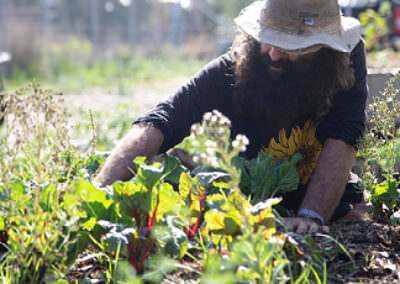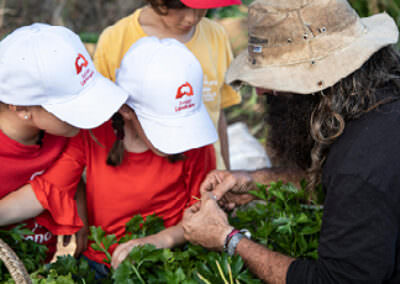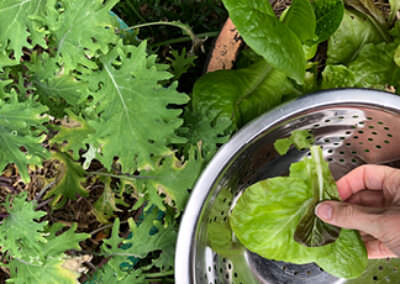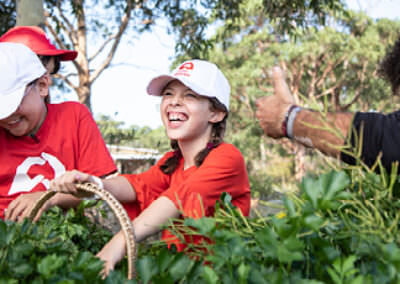
Creating a food garden: harvesting
Time Allocation: 30-40 minutes
Activity Level: Moderate
Introduction
Harvesting your produce at the right time will enable you to get the most out of it and ensure that you can reduce waste. Experiencing the value of growing your own edible fruits and vegetables and then sharing with the wider community, builds active, empowered and aware Junior Landcarers. This helps to build awareness of sustainable food production.
Checklist
Instructions
 Step 1
Step 1
Plan
Use your seed packaging and online garden guides, plus onsite monitoring to determine the best time to harvest your plants. Timing may vary, for example, you may need to harvest in your school garden before the summer holiday.
Ensure you have your collection materials ready and instruct the children how to collect the harvest safely. Wear protective footwear, use safe lifting procedures and look for spiky plant material and insects when harvesting.
 Step 2
Step 2
Collect
Examine your produce for any disease or insect damage before harvesting.
Some leafy plants can be plucked so that you have the opportunity to have a second or even a third harvest from them.
Root vegetables may need to be pulled gently from the soil using a trowel or spade to loosen the soil.
Garden scissors can be useful to carefully cut fruits and leafy vegetables.
 Step 3
Step 3
Clean
Clean produce is important for healthy eating.
Make sure you wash your hands using soap or sanitiser before cleaning or eating your collected produce.
Once collected, use water to wash your produce. Using a colander, bucket or similar container will assist in the process.
Place your washed produce on a paper towel or clean tea towel can help collected produce dry off naturally.
 Step 4
Step 4
Share
You may like to use scales to weigh your harvest before you divide the produce equally. Containers or paper bags will help to easily distribute the produce. Use the activity sheet to help children devise ideas to get the most out of their harvest.
Discuss:
What part of the plant have you harvested?
What uses can you find for your plant parts to avoid waste?
Look at ways you can share the bounty of a large harvest in your community.
Extension Activity
How can you grow your food plants for next year? Discuss in groups the types of plants you have planted. How can you plan to collect the seed so you can plant these plants again next near? What steps will you need take? What else might you like to grow?
Explore some of the ways you can share your harvest with your community. How can this serve and help other people and build the Junior Landcare community?